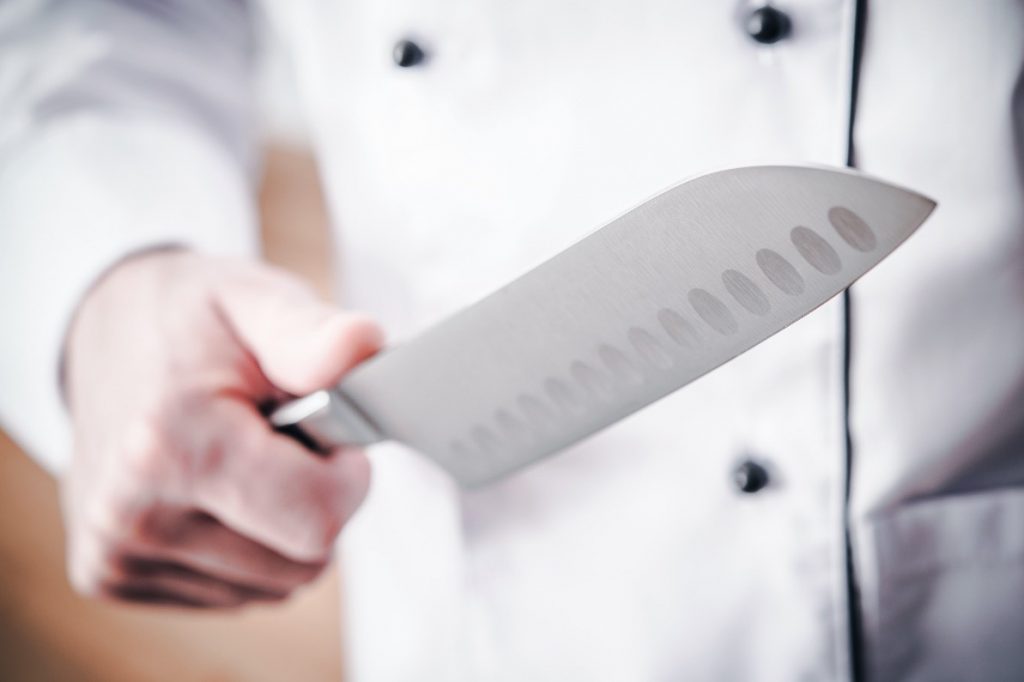Aichmophobia, sometimes defined in the literature as oxyphobia,
is a compulsive condition that manifests itself as a fear of sharp objects.
THERE ARE ALSO OTHER PHOBIAS ASSOCIATED WITH AIСHMOPHOBIA
What is knife phobia?
Knife phobia is an irrational aversion to knives. People with knife phobia may be afraid of being hurt,
or they may fear that they may use the knife to hurt others.
What is needle phobia called?
Needle phobia is called acrotomophobia.
Aichmophobia (aicmofobia en Spanish), sometimes defined in the literature as oxyphobia,
is a compulsive condition that manifests as a fear of sharp objects.
The fear usually has a panic character and is triggered not only by touching the object on the body,
but also by the mere sight of it. Objects that cause fear can be:
- sharp cutlery (knives, forks);
- scissors;
- pins and pins;
- sharp weapons (daggers, hunting knives); sewing needles
- sewing needles;
- broken glass.
The most common is the fear of knives. Aichmophobia is a manifestation of obsessive-compulsive neurosis and, therefore,
is often accompanied by other interrelated fears,
which in turn require a comprehensive approach to treatment.
CAUSES OF PSYCHOMOPHOBIA
The fact that the fear of sharp objects, like any other, has an underlying origin.
Therefore, it is necessary to understand what situation was traumatic for the psyche and as a result led to the phobia.
It is usually easy to identify the cause of an obsessive-compulsive disorder,
because the situation that triggered the fear is stressful and carries a shock and a vivid negative residue.
A traumatic situation may have occurred in a person’s distant past, such as in early childhood.
The child has broken a plate or a window pane, or hurt himself with a knife or other sharp object,
which has triggered a compulsive fear.
One of the reasons may also be a criminal assault on a person,
which has led to a life-threatening or health-threatening situation.
Then a panic fear of the dark may develop together with aichmophobia.
By the way, the age of people who suffer most from aichmophobia is between 15 and 50 years,
and men are much less likely to experience the fear of sharp objects than women.

SYMPTOMS ACCOMPANYING AICHMOPHOBIA
In most cases, aichmophobia manifests itself intermittently.
The person is overcome by severe panic attacks lasting several minutes (sometimes up to 10 minutes) with a frequency of once a month,
in some cases more frequently.
During the panic attack, the person imagines the most frightening images of sharp objects.
The fear causes the person to become socially vulnerable and maladjusted.
Of course, in the case of a life-threatening situation,
sharp objects provoke fear in all people,
because no one has abolished the instinct of self-preservation.
But one need only be concerned if the reaction takes the form of compulsive panic.
To determine whether the condition is really panic,
you should pay attention to the following symptoms:
- fever;
- uncontrollable movements of the limbs;
- heart pain;
- choking, difficulty breathing;
- excessive sweating;
- trembling;
- rapid heartbeat;
- an overwhelming feeling of discomfort and heaviness.
If four symptoms are identified at the same time, it is a sure sign of a panic attack.
TREATMENT OF AICHMOPHOBIA
The fact is that each situation requires an individual approach, taking into account all the peculiarities.
The most common methods of treating phobia are medication and psychotherapy.
Tranquilizers are used as medications, which are addictive and, moreover, are often ineffective in treating fears.
The psychotherapeutic influence method is gentler and more effective,
because it allows understanding the nature of the fear.
This method usually uses simulation situations through which the person gradually approaches the subject of his or her fear.
This technique is called “systematic desensitization” and is one of the most common methods of behavioral psychotherapy.
Also, within the psychoanalytic field, practitioners can use hypnosis to treat aichmophobia.
Of course, to work with this method, the therapist must have the highest level of professional knowledge and skills;
otherwise, this treatment is fraught with many negative consequences.
In working with children, art therapy techniques are often used, which also give good results.
If you have started to notice the symptoms of aichmophobia,
it is important to contact a professional, as in the early stages of the phobia, getting rid of it is much more realistic.
Moreover, if the fear has already set in, in the future it can only be expected to get worse.
We would also like to introduce you to the most effective methods of coping with fear that you can use on your own.
The first one is the relaxation method.
You should learn to relax and in case of a fearful situation, you should use this method to calm down and get rid of stress.
The second method consists in attention training. Learn to quickly switch your attention from one object to another,
this will help you to avoid panic attacks and to prevent your imagination from “cornering” you.
But most importantly, remember that fear is an acquired phenomenon, and getting rid of it is more than realistic.

